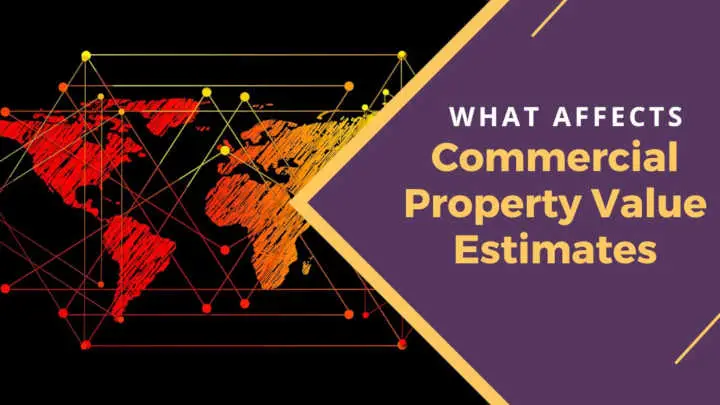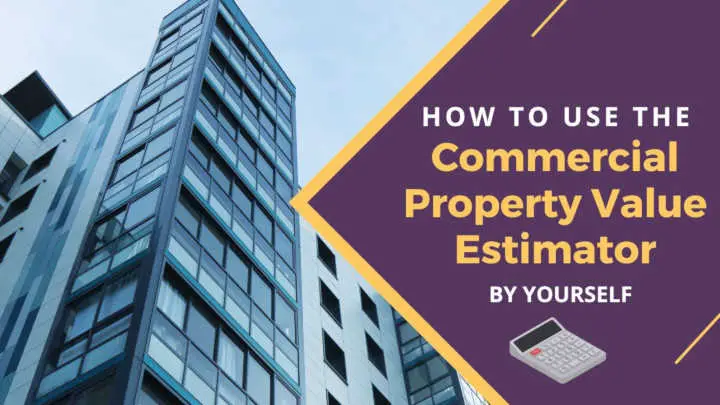In this article, I will share a simple way to use the commercial property value estimator by yourself to know how much your property is worth in the current market. But let me tell you, valuing a commercial property requires a lot of assumptions and estimates. There are four commonly used valuation methods that you can use to assign a value to a particular property.
The value of any commercial property depends on various factors, including:
- Market demand and supply
- Amenities in the property
- A clear title with the availability of all the required documents
- The potential cost to rehab it.
All these factors can have an effect on the value you will estimate.
Table of Contents
What is the Commercial Property Value Estimator?
The most commonly used approaches to determine the current market value of a property are as follows.
- Cost Approach
- Income Approach
- Gross Rent Multiplier
- Sales Comparison Approach
But with all the value estimators, no one can ever tell you the exact value of your commercial property because
- “The value of a property is the price the buyer and seller agree.”
But you can say that the value will be close to the results calculated by one or more of these approaches.
What affects the Commercial Property Estimated Value?

As I have said earlier, the commercial property estimated value depends on many factors, and the below points are the most important factors when determining the exact value of property in any part of the world.
Read also: How to invest in a commercial property using fractional ownership
1. Area Sales Comparisons
You can get a good idea of the value of your property by just comparing it with another similar property in that area. Most investors use this approach first then they do the due diligence on that property. It will give you some tremendous data on that property estimation.
2. Current Capitalization Rates In the Market
On average, the average Cap Rate is 6%. But it can go up to 10% in some areas. The Cap Rate is the rate that tells you the average appreciation rate of the property in that market.
It means if the price of your property is $100,000 today, after a year, it will become $110,000 if we take the Cap Rate at 10%. There is a formula to determine the Cap Rate of your property if this average rate does not help.
- The Cap Rate = Net Operating Income (NOI)/ Total Purchase Price
Only use it if the property is big and has more than 10 units in it. Otherwise, you can ask your local agent, and he will give you the Cap Rate in this area.
3. Total Rehab and Maintenance Costs
When selling a property, you should always consider the rehab cost. Because the person who will buy it will try to reduce the asking price by identifying those broken items. That is why when you make an estimation, minus that cost from the total price. Which means:
- Rehab Cost = Total property value – Cost to repair all the broken items.
Hire a contractor, analyze the cost and then repair them if you want to sell them for a higher price.
4. The Current Market Conditions
Look, in real estate, the market is everything. You can not outrun the market. What the market tells us is the final verdict.
That is why you should analyze the market first, especially the area where your property is situated. The average price may vary between every mile. Analyze the property area and then estimate.
5. Demand and Supply in the Area
And don’t forget the demand and supply of the whole market when using the commercial property value estimator. If the demand is high, you can set a little high price. If not, you should reconsider the asking price once more.
- High demand means = Higher occupancy rate
- Low demand means = Low occupancy rate
You will get these while comparing properties in that market and then set your asking price according to the demand and supply.
6. No of Amenities Available in the Property
The more amenities the property has, the easier life will be for people, and the demand will be higher. If a property has all the following amenities and utilities, it will sell for a higher price.
- Good electrical supply with power backups
- Clean water supply
- Pre-designed rooms
- New startups in the market
- Brand new developments in that area
- Good transport facilities
- Availability of new homes to rent for (for employees)
If your property consist all the above, then you are on the positive side.
7. A Clean Property Title
And lastly, make sure your property tile has no disputes. If it has, try to solve them all before listing them. No investor will buy a property that has a title problem. A Title Deed is the most important thing when purchasing a property. Make it neat and clean.
The Commercial Property Value Calculator

Now, I will give you some formulas to estimate the value of your commercial property starting with the cost approach method.
1. Cost Approach Method
The cost approach means how much it will cost to build a similar property in that area. No investor will pay an extra penny if he can get the same property at a much lower price from somewhere else. So here is the formula.
- Property Value = (Repair Cost – Depreciation) + Land Value
Take a pen and paper, calculate the property value and then list it for the right price. It will sell. Otherwise, months will pass, but the property will remain still.
- The Deprecation is a tax code people use to reduce their property taxes.
Look, the property will become dust over time, and no one can recover that. That is why it’s called a depreciable asset. Butt land never loses its value.
The land will remain at a standstill position for a million years. But the property will go astray after 100 years. The Deprecation measure how fast the property will go astray, and by using that, they estimate the current value.
2. Income Approach Method
The income approach is sometimes called the Direct Capitalization Approach. Using this formula value of a property is calculated by taking Net Operating Income (NOI) and dividing it by a chosen Capitalization Rate. The formula looks like this:
- Total Property Value = Net Operating Income / Capitalization Rate
It only applies if the property has more than ten units and all of them are generating rental income. Otherwise, most of the time, people use the Cost Approach to estimate the value of their property.
3. Gross Rent Multiplier Approach
The Gross Rent Multiplier (GRM) is calculated for recent sales of similar properties in that area. The formula to calculate it is:
- Gross Rent Multiplier (GRM) = Sales Price / Annual Gross Rents
I advise you to contact a professional if you want to use it. It is not easy to measure the sale price and the annual gross rents in that area.
4. Sales Comparison Approach
The sales comparison approach is used by like everyone, for calculating the value of their properties. It has no exact formula, but they look at the recently sold properties and compare them with what they have.
They also consider the location, market conditions, and other economic metrics. Then they assign a value to those properties.
5. A Combination of All
You can use all four commercial property value estimator methods to estimate the value of your property if it is big enough. Most investors use these methods, if any of the above are not working. And they also know that the market decides the price, not the property itself.
Last Words
So use all these commercial property value estimator, and value the exact price of your property by yourself. I would say it’s not easy, but you can do it. If not, then hire a professional to do the job for you. I wish you the best of luck. Thanks for reading. See you soon.

